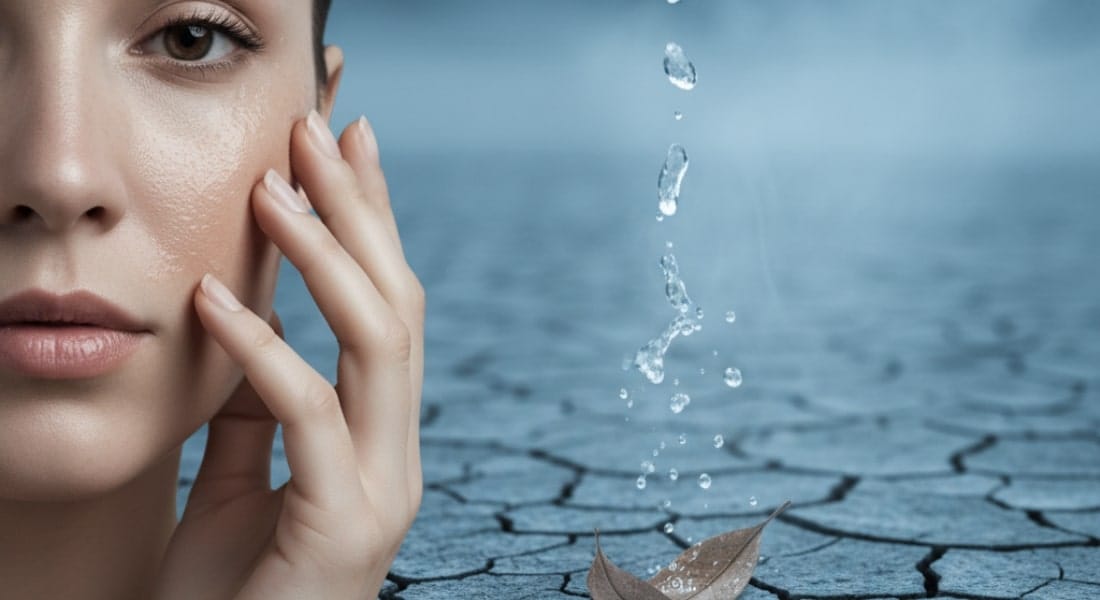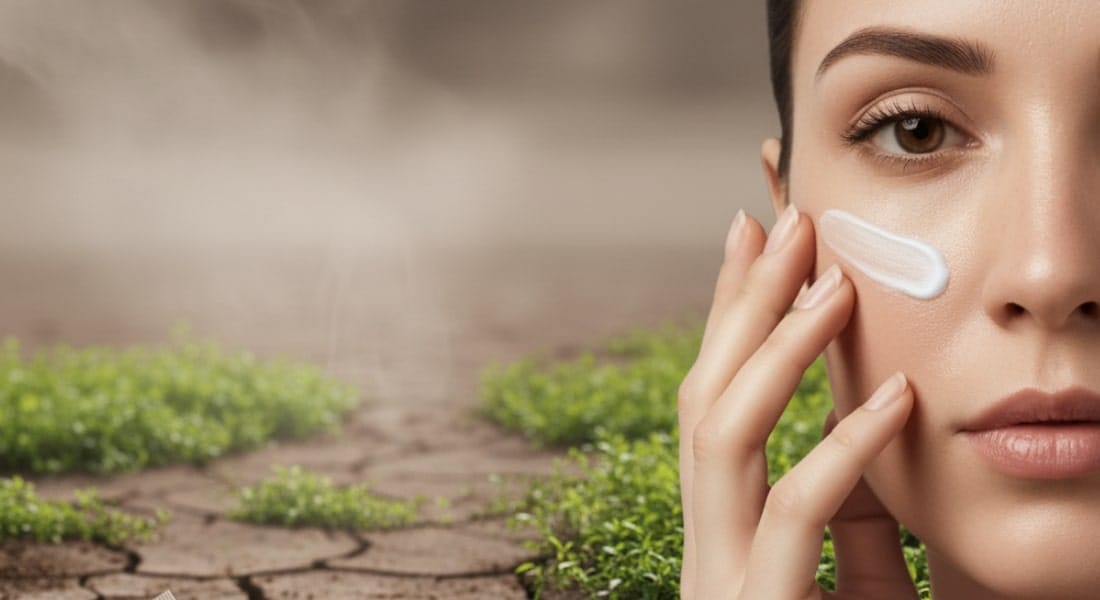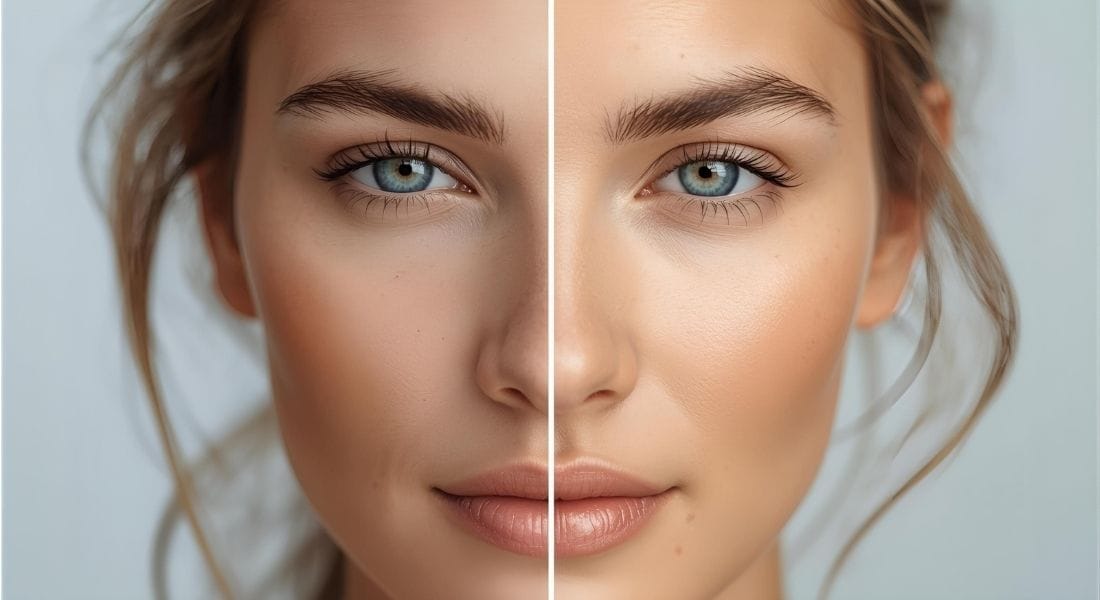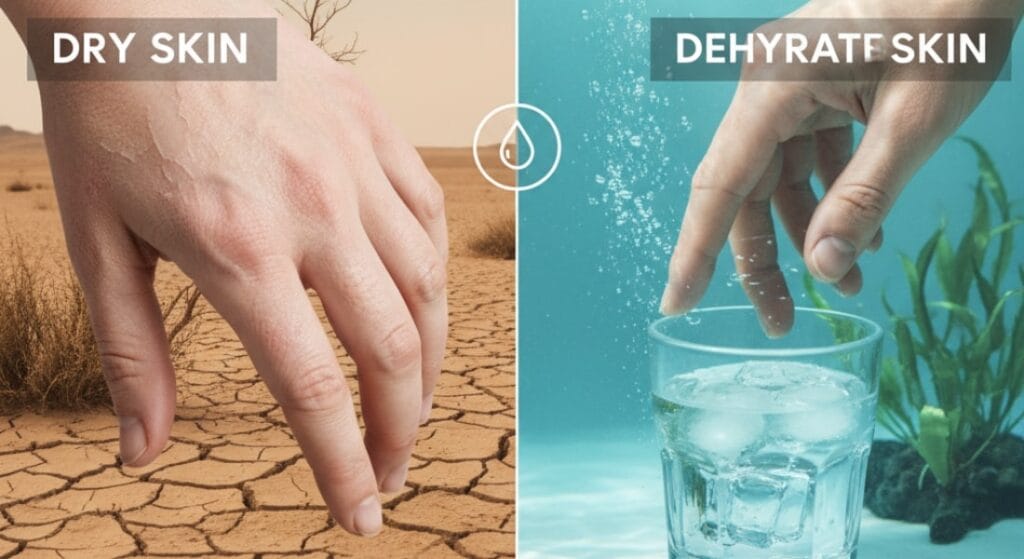Navigating the world of skincare can often feel like learning a new language. Among the most common points of confusion are the terms “dry skin” and “dehydrated skin,” which are often used interchangeably. While they may sound similar, they are fundamentally different. Dry skin is a skin type, something you’re born with, while dehydrated skin is a skin condition, a state your skin is in that can affect any skin type—even oily or combination.
Understanding this crucial distinction is the key to effectively addressing your skin’s unique needs. Using products for dry skin when your issue is dehydration will not solve the problem and may even make it worse. This article will demystify the difference between dry and dehydrated skin, help you identify which one you have, and provide clear, evidence-backed advice on how to treat each. We’ll also introduce you to Lytec HYDRA, a clinically formulated hydration booster that can be a game-changer for restoring your skin’s water balance.
What is Dry Skin?
Dry skin is a skin type characterized by a lack of natural oils, or sebum. Your skin has a natural lipid barrier—a layer of fats and oils that protects it from external irritants and locks in moisture. If your skin doesn’t produce enough of these lipids, its barrier function is compromised, leading to moisture loss.
Common Causes of Dry Skin:
- Genetics: Often, a predisposition to dry skin is inherited.
- Aging: As we get older, our skin’s oil glands become less active, leading to decreased sebum production.
- Hormonal Changes: Fluctuations in hormones can impact sebum levels.
- Harsh Cleansers: Using cleansers with strong detergents or sulfates can strip the skin of its natural oils, worsening dryness.
- Environmental Factors: Cold, dry weather and low humidity environments can exacerbate the symptoms of dry skin.
Common Signs of Dry Skin:
- Rough, flaky, or scaly texture
- A feeling of tightness, especially after cleansing
- Slight to severe itching
- Dull or ashy complexion
- More noticeable fine lines
Because dry skin is a type, it’s a long-term condition that requires a consistent skincare regimen focused on replenishing lost oils and fortifying the skin’s lipid barrier.
What is Dehydrated Skin?
Dehydrated skin is a temporary skin condition caused by a lack of water, not oil. This means any skin type—dry, oily, combination, or normal—can become dehydrated. When the skin lacks water, it can lose its plumpness and vitality, becoming more susceptible to external aggressors.

Common Causes of Dehydrated Skin:
- Environmental Stressors: Dry air, excessive heat or air conditioning, and sun exposure can all pull water out of the skin.
- Diet and Lifestyle: Insufficient water intake, excessive consumption of diuretics like caffeine and alcohol, and a diet lacking in water-rich fruits and vegetables can lead to systemic dehydration, which shows up on your skin.
- Over-exfoliation: Using harsh physical or chemical exfoliants too frequently can damage the skin barrier, leading to transepidermal water loss (TEWL).
- Improper Product Use: Using products with high concentrations of alcohol or other drying ingredients can strip the skin of its water content.
Common Signs of Dehydrated Skin:
- Dullness and uneven tone
- A feeling of tightness, even in oily areas
- Increased sensitivity or irritation
- The appearance of fine lines and wrinkles
- Oily-feeling skin (skin may overcompensate by producing more sebum to make up for the lack of water)
- A “crepey” or papery texture
The key takeaway here is that you can have oily, acne-prone skin that is also severely dehydrated. In fact, many people with oily skin try to “dry it out” with harsh products, inadvertently making it dehydrated and causing it to produce even more oil.
Dry Skin vs Dehydrated Skin: Key Differences
To make it easy to tell the difference, here is a comparison table summarizing the key points.
| Feature | Dry Skin | Dehydrated Skin |
| Nature | A Skin Type (lack of oil) | A Skin Condition (lack of water) |
| Cause | Insufficient sebum production | Insufficient water content |
| Symptoms | Flakiness, itching, redness | Tightness, dullness, fine lines |
| Texture | Rough, often scaly | Crepey or papery |
| Can it affect all skin types? | No, it’s a specific skin type | Yes, it can affect oily, normal, or dry skin |
| Treatment Focus | Replenishing oils (emollients) | Restoring water (humectants) |
The most important takeaway from this table is that treating one condition with the wrong products will be ineffective. For example, a heavy, oil-based moisturizer is great for dry skin but might not solve the underlying water deficiency in dehydrated skin.
How to Treat Dry Skin
The goal of skincare for dry skin is to nourish and protect the skin’s lipid barrier by adding emollients and occlusive that prevent moisture loss.

- Gentle Cleansers: Use creamy, non-foaming cleansers that don’t strip the skin of its natural oils.
- Rich Moisturizers: Look for products that are rich in ingredients like ceramides, shea butter, squalane, and fatty acids. These ingredients help to replenish the lipid barrier.
- Face Oils: Incorporate a few drops of a nourishing face oil into your routine to provide extra lubrication and a protective barrier.
- Avoid Harsh Ingredients: Stay away from alcohol-based toners, strong fragrances, and foaming agents that can exacerbate dryness.
How to Treat Dehydrated Skin
The approach for skincare for dehydrated skin is centred on restoring the skin’s water content. The most effective way to do this is by using products that contain humectants.
- Humectants: These are ingredients that attract and bind water to the skin. The most common and effective humectants are hyaluronic acid, glycerin, and urea. They act like sponges, drawing moisture from the environment or from deeper layers of the skin to the surface.
- Hydrating Serums and Essences: These are lightweight products designed to deliver a concentrated dose of hydration before moisturizing. A high-quality hydrating serum is a must-have for anyone dealing with dehydration.
- Lifestyle Changes: How to fix dehydrated skin also involves making internal changes. Drink plenty of water throughout the day, and limit your intake of dehydrating beverages like coffee and alcohol.
- Lytec HYDRA: For a powerful and clinically-backed solution, consider Lytec HYDRA. This advanced gel-cream is formulated with a unique blend of humectants and emollients to provide deep and long-lasting hydration. It contains key ingredients like Sodium Hyaluronate and Ceramides, which work together to restore the skin’s moisture balance and strengthen its natural barrier. As a best hydration product for skin, Lytec HYDRA is an essential step in your routine for plumping and revitalizing dehydrated skin.
Tips to Maintain Healthy, Balanced Skin
Whether your concern is a skin type, a skin condition, or both, a holistic approach is key.
- Layering Products Correctly: Apply your products from thinnest to thickest consistency. Start with a hydrating serum or essence, follow with your moisturizer, and finish with a face oil if needed.
- Sun Protection: Daily use of a broad-spectrum sunscreen is crucial. UV radiation can damage the skin’s barrier, leading to increased water loss and a higher risk of dehydration.
- Gentle Exfoliation: Exfoliate 1-2 times per week to remove dead skin cells and allow your hydrating products to penetrate more effectively. Be careful not to overdo it, as this can damage your skin barrier.
- Consistency: The best results come from a consistent, daily routine. Stick with your chosen products for at least 4-6 weeks to see a noticeable improvement.
Frequently Asked Questions
Q1: Can oily skin be dehydrated?
A: Yes, absolutely. Oily skin is a skin type, while dehydration is a lack of water. Oily skin can become dehydrated due to factors like harsh cleansers, hot weather, or not drinking enough water. In fact, when oily skin is dehydrated, it often overcompensates by producing even more oil, leading to a vicious cycle of oiliness and dehydration.
Q2: How do I know if my skin is dry or dehydrated?
A: The simplest way is to perform a “pinch test.” Gently pinch the skin on the back of your hand or on your cheek. If it looks “crepey” or wrinkled and doesn’t bounce back quickly, it’s likely dehydrated. If your skin feels rough, flaky, or tight all over, you’re more likely to have a dry skin type. You can also have both.
Q3: Can dehydration cause wrinkles?
A: Dehydration can cause fine lines to appear more prominent. When the skin lacks water, it shrivels, making existing lines and wrinkles look more defined. However, these are often “dehydration lines” and not true wrinkles. Once the skin’s hydration is restored, these lines can plump up and become less noticeable.
Q4: Is Lytec HYDRA suitable for all skin types?
A: Yes, Lytec HYDRA is a professionally formulated gel-cream that is suitable for all skin types. Its lightweight, non-greasy formula provides deep hydration without clogging pores, making it an excellent choice for oily and combination skin as well as dry skin.
Conclusion

Understanding the difference between dry and dehydrated skin is a critical step towards achieving a healthy, radiant complexion. By correctly identifying your skin’s needs—whether it’s a lack of oil or a lack of water—you can choose the right products and build a routine that truly works.
Don’t let the confusion of skincare labels stand in the way of your skin health. By treating dehydration with powerful humectants and a balanced lifestyle, you can restore your skin’s plumpness and vitality. For an advanced and reliable hydration solution, we encourage you to explore the benefits of Lytec HYDRA on the Aakaar Medical Technologies Ltd website. Start your journey to hydrated, healthier skin today.

